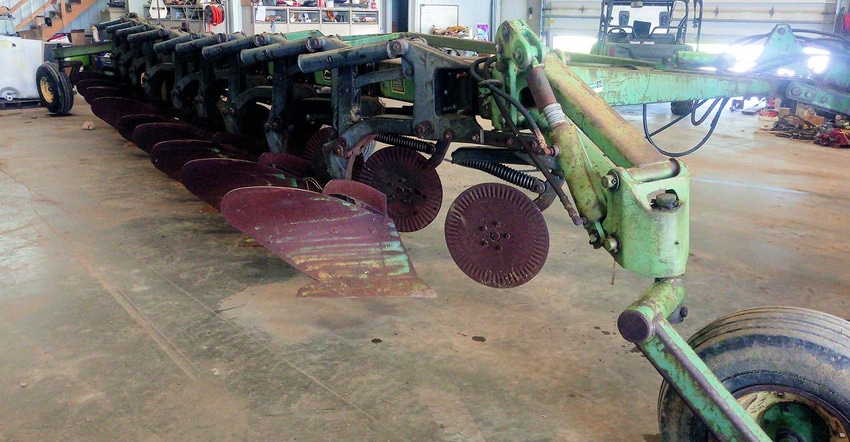August 31, 2018

We are likely less than a week from the start of harvest. Corn will be what it is, but late rains may lead to some good soybeans. With rain come clouds. We have been coming up short on sunlight to keep the plant factories going. I think this is one of the reasons is it difficult to ring the yield bell consistently. It is hard to get that perfect mix from nature. However, local elevators believe the crop is out there and widened out basis the last couple days.
We did a combine inspection and that led to some repairs. We run a flagship Case combine. Two of the three main issues were addressed last year. Those were the unload auger/gearbox splines and laser alignment of the feeder house drive shaft. Apparently, we missed the rotor cone last year, as it has worn too far and now requires a new cone rather than the liner kit.
We also chose to replace some of the rotor bars since the rotor was out and easily accessible. One other place to check annually is the clean grain chain. After losing several chain links, we have stopped using the connector links with s hooks or cotter pins and begun using ones with locknut which are used in the feeder house chain. It seems those stay fastened better.
Prepping grain bins
Yesterday I began prepping grain bins for the new crop. We still have some old crop corn on site and plan to consolidate it before harvest. I became distracted when I was frustrated with some of the slide gates (that control the flow of grain from the bin into the unload auger). We always have trouble with these. I remembered rack and pinion kits I purchased several years ago, and spent the rest of the day installing those. Once we get the grain consolidated, we will have the bins measured for crop insurance records.
The old plow has been retrieved from fence row storage and may see some action this year. It will need new hydraulic hoses, after sitting idle for more than five years. The tires looked ok, but we will see what they look like after topping off air. I suspect there will be some casualties due to dry rot.
Why are we thinking about using the plow? Well, the chicken litter we have been applying has a very high pH. Our soil pH has creeped up and is teetering on the high range. We feel that if we do a good job of turning the soil upside down, our soils will balance out. We are proceeding with chicken litter going forward but using discretion as to how much is applied and which fields receive it.
Any fields we fall plow will have to receive a cover crop to protect the soil from winter winds.
The opinions of the author are not necessarily those of Farm Futures or Farm Progress.
About the Author(s)
You May Also Like






